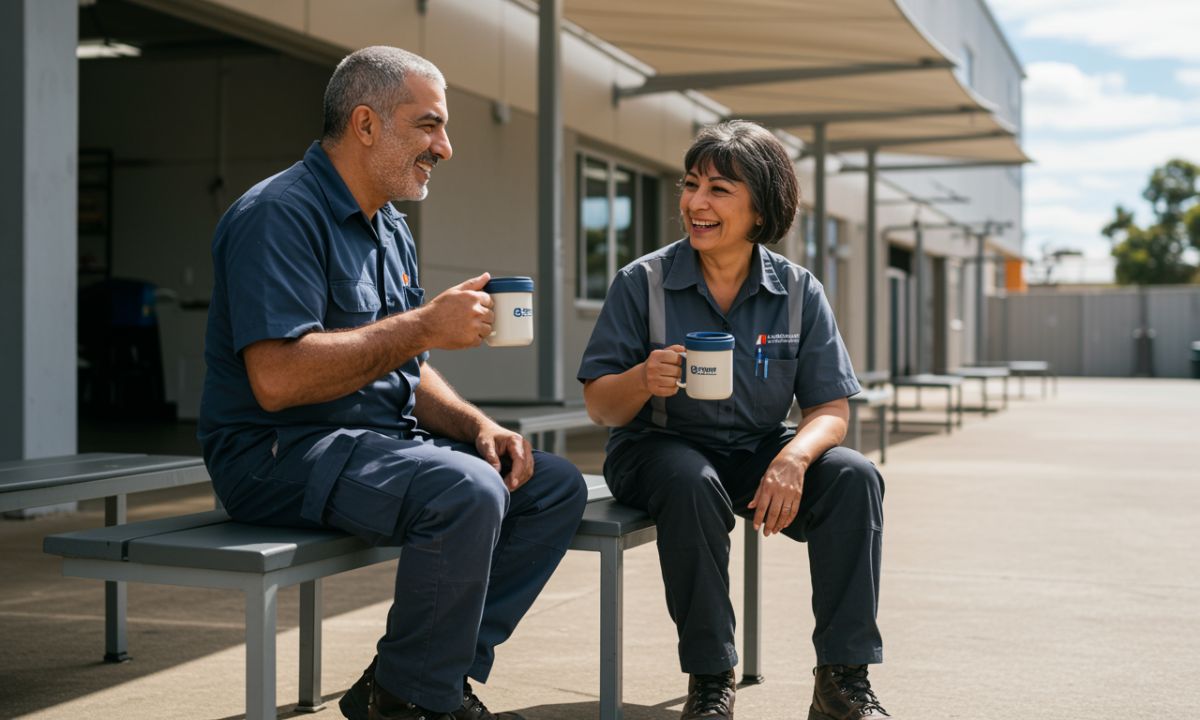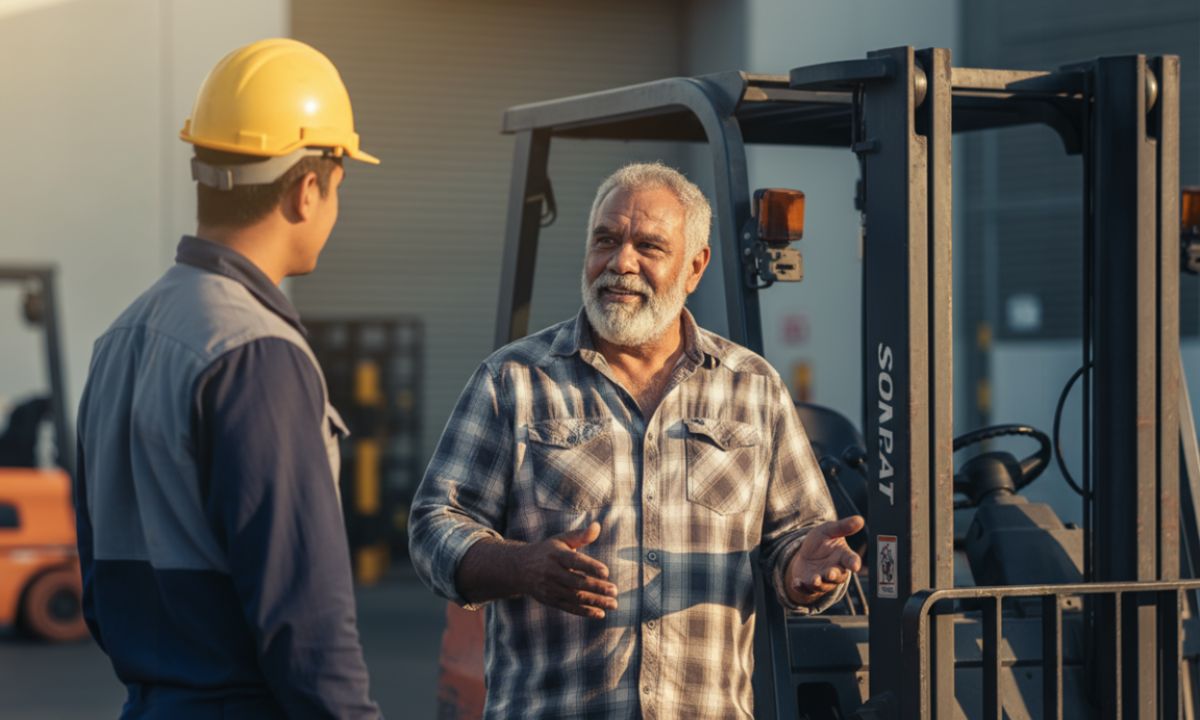The 65+ Workforce: Adapting Safety Protocols for Queensland's Rapidly Aging Employee Demographics

Queensland's workforce is seriously changing. Seniors aged 65 and over now represent the fastest growing population group, with their numbers more than doubling over the past 20 years and reaching 959,110 people in 2024. Because of this, employers now have to rethink safety in the workplace.
The truth is, 79% of Baby Boomers say they don’t plan on retiring when they reach 65. For Queensland's employers, this means one thing: traditional safety protocols need a serious rethink.
The Reality Check: What Makes 65+ Workers Different
Older workers face genuine physical challenges that younger employees don’t usually encounter. Workers aged 65 and over had a fatality rate of 5.3 per 100,000 workers in 2020 compared to just 0.4 per 100,000 for workers under 25.
However, what the statistics don’t tell you is that these aren’t inevitable outcomes, and they can be prevented through smart workplace adaptations.
The physical changes that come with ageing are well-documented. Muscle mass begins decreasing in the 30s and accelerates after age 60. Estimated decreases in oxygen uptake of 20% to 30% occur between the ages of 20 to 49. Vision deteriorates, hearing changes affect communication and reaction times slow down.
Yet research reveals that older workers with higher levels of physical ability had a lower risk of occupational injury than those with lower physical ability. The key insight here is that it's not age itself that creates risk, but rather the mismatch between job demands and physical capabilities.
Where the Opportunities Lie
Smart Queensland employers are discovering that accommodating older workers is a competitive advantage. These employees bring irreplaceable institutional knowledge, strong work ethics and lower turnover rates.
The average age of a highly skilled manufacturing worker is 56 years. In many industries, this level of expertise can’t be easily replaced, so keeping these workers safe and productive makes sense for most businesses.
The solution isn't lowering standards or creating separate systems. It's about universal design principles that benefit everyone while specifically addressing age-related challenges.
Engineering Smart Solutions: The Technology Angle
Queensland workplaces are successfully implementing adaptive technologies that bridge the gap between ageing bodies and job demands. The best solutions often seem deceptively simple.
Ergonomic Workstations: Ergonomic chairs represent the foundation of age-friendly workplaces. Workstations should position frequently used items within easy reach at an appropriate height.
Lighting That Works: Age-related vision changes demand better illumination, so work areas should be properly lit. Offices installing task-specific adjustable lighting will have fewer eye strain incidents and improved safety records.
Tool Redesign: Providing tools designed for ‘power grips’ rather than pinch grips helps older workers maintain control and reduces strain. In logistics operations, ergonomic hand tools and lifting devices for warehouse workers over 60 resulted in significant drops in wrist and back injuries.
The Ergonomic Foundation: Making Physics Work
Don’t think ergonomics is just about comfortable chairs. It's also about redesigning workplaces to match human capabilities rather than forcing humans to adapt to poorly designed jobs.
The Neutral Posture Principle: Working in neutral postures reduces stress on the musculoskeletal system, which becomes important as muscle mass and joint flexibility decline. This means avoiding awkward positions and prolonged static postures.
Many manufacturing sites have successfully reduced risk by prioritising engineering controls. They have redesigned tools and workstations rather than relying solely on training. Jobs redesigned to enable neutral working postures and frequent posture changes directly reduced musculoskeletal complaints among workers aged 60 and over.
Movement and Recovery: The body's musculoskeletal system is designed to move. For ageing workers who need additional recovery time from physical exertion, frequent microbreaks and rotation between different task types help prevent fatigue-related injuries.
Environmental Considerations: Temperature control becomes more important given older workers' reduced ability to maintain constant body temperature, while air quality management will reduce environmental pollutants. These factors interact with physical ergonomics to create suitable workplace conditions.
Building Age-Inclusive Safety Programs
The most successful Queensland workplaces don't create separate safety programs for older workers. Instead, they build inclusive programs that recognise diverse capabilities and needs.
Assessment and Matching: Regular ergonomic evaluations help identify individual worker needs and appropriate workplace improvements. A systematic ergonomic process involves prioritising jobs for evaluation, conducting objective assessments, developing improvement opportunities, implementing solutions with team input and monitoring effectiveness.
Mining companies introducing annual physical ability testing and biometric screenings for workers over 60 found they could better tailor job assignments and reduce workplace injuries. The key is matching job tasks to employees' physical abilities while evaluating lifting, carrying, balance, vision, hearing and endurance requirements.
Peer-to-Peer Learning: Queensland health districts are implementing buddy systems, where older workers mentor younger staff. This approach reduced injuries among older employees while improving workplace culture and safety awareness. These programs leverage older workers' experience while allowing them to take on less physically demanding roles.
Flexible Arrangements: Australian retail chains testing flexible shift arrangements for older workers reported lower fatigue and improved attendance. Phased retirement plans enable older employees to transition to consultancy, training, or part-time roles, resulting in higher job satisfaction and lower absenteeism.
Also read: The Recovery Journey: Understanding Australia's Support Systems Following Serious Injury
Compliance Framework: Getting the Legal Basics Right
Queensland's Work Health and Safety Act 2011 places primary health and safety duties on employers to ensure, so far as is reasonably practicable, the health and safety of all workers regardless of age. For ageing employees, ‘reasonably practicable’ may require specific considerations around physical limitations and health conditions.
The Act's risk assessment requirements must incorporate age-specific factors. Employers need to identify workplace hazards, determine who might be harmed and how, decide on control measures, implement those controls and review them regularly. For older workers, this process must consider physiological and cognitive changes such as decreased strength, flexibility, balance, vision and reaction time.
The federal Age Discrimination Act 2004 provides protections to complement state workplace safety legislation. The Act makes it unlawful to discriminate against people based on age in employment contexts, covering recruitment, terms and conditions, promotions, training and dismissal.
Practical Implementation: Your Action Plan

Start with Assessment: Conduct objective ergonomic evaluations for roles commonly filled by older workers. Professional assessments identify specific risks and improvement opportunities rather than making assumptions about age-related limitations.
Prioritise Engineering Controls: Focus on physical workplace modifications before administrative solutions. Adjustable furniture, improved lighting and ergonomic tools provide immediate, lasting benefits.
Design for Movement: Arrange workstations and tasks to permit posture changes. Encourage regular breaks and light physical activity to maintain flexibility and reduce musculoskeletal risks.
Involve Your Workers: Employee engagement in solution development leads to better long-term outcomes and higher compliance. Older workers often have valuable insights about practical workplace improvements.
Monitor and Adjust: Evaluate interventions for effectiveness. What works in one area may not work in another. Continuous improvement ensures your adaptations remain relevant as workforce demographics change.
Also read: Automation and Worker Safety: The Double-Edged Sword Transforming Australian Industries
Common Pitfalls to Avoid
Don't assume all older workers have the same limitations. Physical and cognitive decline vary greatly between individuals due to lifestyle, health, nutrition and exercise patterns. This means there's no typical older worker to design safety measures for.
Avoid relying solely on training when engineering solutions are available. While education matters, physical workplace modifications provide more reliable protection.
Don't neglect environmental factors. Poor lighting, inadequate temperature control and cluttered workspaces create unnecessary risks for ageing employees.
Resources for Moving Forward
Professional Support: Certified ergonomics consultants provide tailored advice for workspace design and risk assessment.
Government Guidance: Safe Work Australia and Queensland Government resources offer guidelines and training materials for age-inclusive workplace safety.
Industry Tools: Workplace ergonomics checklists help identify risks and improvement opportunities systematically.
The Bottom Line
Queensland's ageing workforce represents both challenges and opportunities. The physical changes that come with age are real, but they shouldn’t be seen as barriers to safe, productive employment.
Smart employers are discovering that adaptations benefiting older workers often improve conditions for everyone. Ergonomic workstations reduce injury risk across age groups. Better lighting improves accuracy and reduces errors. Flexible scheduling arrangements boost morale and retention.
The demographic shift toward an older workforce isn't slowing down. Queensland employers who adapt their safety protocols will now gain competitive advantages in attracting and retaining experienced workers while building more inclusive, safer workplaces for everyone.
The question isn't whether your workplace will need to accommodate older workers. It's whether you'll be ready when they need you, because you still need them.
If it's time to talk, we're here to help. Get free advice direct from our solicitors today.





